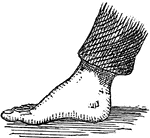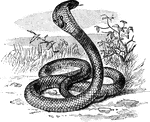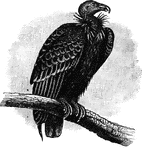
Stack Arms
"Throws the butt about 2 feet in advance of that of his own piece and opposite the right of the interval,…

Click Beetle
A type of beetle that when placed on it back, will spring up in the air onto its feet, producing a clicking…
Dummy
"dummies should be constructed in such a manner as to permit the execution of attacks wthout injury…

Fraise
"A fraise is a palisade horizontal, or nearly so, projecting from the scarp or counterscarp. A modern…

Cavalry obstacle
"A formidable obstacle against cavalry consists of railroad ties planted at intervals of 10 feet with…

High wire entaglement
"In the high entanglement the stakes average 4 feet from the ground, and the wiring is horizontal and…

Winemaking
"Copied from the wall of a house in Pompeii, representing the vintagers treading grapes with their feet."…

Egyptian Couch
"The Egyptian couches were executed in great taste. They were of wood, with one end raised, and receding…

Egyptian Bellows
"Among the remarkable inventions of a remote era, may be mentioned bellows and siphons. The former were…

Clove Tree
An evergreen tree 15 to 30 feet high with large elliptic smooth leaves. Its flower buds are commonly…
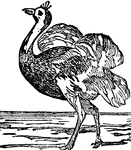
Ostrich
A large bird, nearly ten feet high, having a long neck, stout long legs, with only two toes, and short…

Palaeotherium magnum
"The Palaeotherium magnum was of the size of a horse, but thicker and more clumsy; its head…

Anoplotherium Commune
"The Anoplotherium commune was of the height of the wild boar, but its form was more elongated;…

Sea Eel
A sea eel that can grow up to 10 feet in length and weigh 100 pounds. Usually a brownish green.
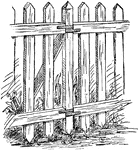
Picket fence
"Procure pickets two inches wide, by half an inch thick, and six feet long; nail them to two rails,…

Overshot wheel
"In the overshot wheel, the water falls into buckets at the top, and by its weight, aided by the force…

Shore-jumper
"The bodies of these animals are compressed laterally, and curved upon the sides; the eyes are immovable,…

Copperhead
A snake of rather small size, usualy under two feet and of a dull pale chestnut or hazel color with…
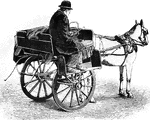
Jaunting car
"Each is a two-wheeled affair, with seats high up over the wheels and steps below on which our feet…
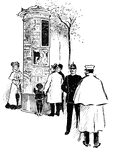
German Street Corner
"Each is as big around as a hogshead, and about fifteen feet high; it is covered with printed manner,…
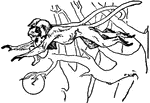
Mowgli's Brothers
The Monkeys capture Mowgli. Two of the strongest monkeys caught Mowgli under the arms and swung off…
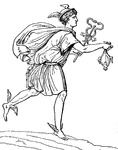
Mercury (Hermes)
"Mercury made haste, put his winged slippers on his feet, and cap on his head, took his sleep-producing…
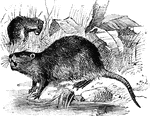
Coypu
A rodent of South America. Its head is large and depressed, its neck short and stout, its limbs short,…
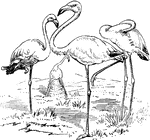
Flamingoes
Gregarious wading birds, usually 3-5 feet in height, found in both the Western and Eastern Hemisphere.

Owl
Owls can be found in all parts of the world, some as short as five inches long while others are as large…

Gull
Gulls are in general medium to large birds, typically grey or white, often with black markings on the…

Kingfisher
A family of incessorial birds noted for their bright plumage, stout bill, strong feet, and short tail.
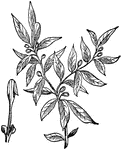
Laurel
A genus of plants ranging in size from a shrub to trees sixty feet in height. They are natives of southern…
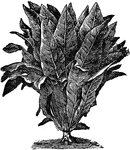
Lettuce
An annual plant cultivated in gardens, and which serves as a salad. There are many species, most of…
Ling
A species of sea-fish found in the northern seas as far north as Iceland. It is allied to the cod family.…
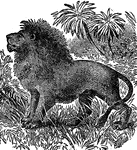
Lion
A magestic carnivorous animal, the largest of the cat genus. It is one of the most active of the large…
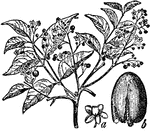
Mahogany
A large tree of the order meliaceae, common to tropical America, and noted for its close-grained and…
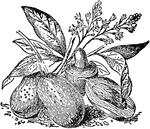
Mango
A tree native to tropical Asia, but now naturalized extensively in America and other grand divisions.…
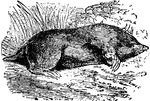
Mole
An insectivorous animal having a barrel-shaped body, very broad fore feet adapted for digging, and burrows…

Well Water
How the well often becomes impure and carries disease. A well near a barnyard or cesspool is likely…
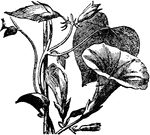
Morning Glory
A family of climbing plants, including many species. They are familiarly known as favorite flowering…

Swastika Design
"Derived from the Sanscrit word Svasti, which means good pretence. It dates bck three or four thousand…

Swastika Design
"Derived from the Sanscrit word Svasti, which means good pretence. It dates bck three or four thousand…
Swastika Design
"Derived from the Sanscrit word Svasti, which means good pretence. It dates bck three or four thousand…

Long Ladders
These are of the common type. They are used to reach most areas to be painted on exteriors of buildings.…
Extension Ladders
These are practically the same type as Long Ladders, plus mechanical devices permit fastening two or…

Step Ladder
The painters' step ladder shows that this ladder is quite like the trestle but has wide, flat steps…
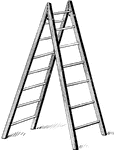
Trestle
These are two-sided ladders used mostly for interior work, though they are handy too for certain exterior…
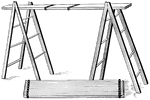
Extension Plank
Instead of using ordinary building planks- 2x10's, there are times when the improved extension planks…

Swing Stage Scaffold
This shows the old fashioned rope stirrup rigging. The scaffold as a whole consists of a platform twenty…
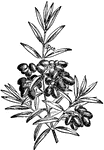
Olive
A genus of evergreen trees and shrubs found in the warmer regions of temperate climates. They attain…

Platypus
An animal of Australia, the only genus of its class. It is characterized by webbed feet, short tail,…
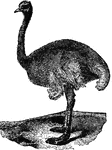
Ostrich
A genus of cursorial birds, of which it is the type. They are native to the deserts of Africa and Arabia,…
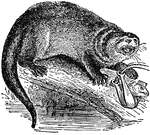
Otter
A class of carnivorous mammals of the weasel family, which includes about twenty species that vary greatly…
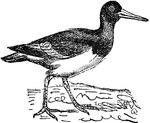
Oystercatcher
A wading bird closely allied to the plover. it is easily known from its red feet and bill, the latter…

Papaw
A tree native to tropical America, allied to the passion flower family, and now extensively cultivated…
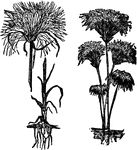
Papyrus
A genus of rushlike plants of the sedge family, growing in marshy places from root-stalks. The stem…
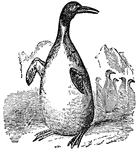
Penguin
A genus of webfooted birds native to the southern hemisphere. They have short wings useless in flight,…
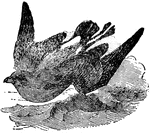
Petrel
A genus of sea-birds. They include many species, all of which have webbed feet and long and strong wings.…
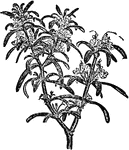
Rosemary
An evergreen shrub of the mint family, which is native to southern Europe and western Asia. It is from…
